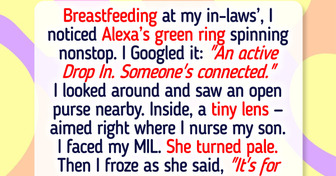10 True Stories That Prove Kindness Is Quiet — but Stands Strong


I have to say — it would be hard to visit the biggest waterfall in the world because it’s underwater. Deep down below, there are fissures and caverns on the ocean floor. They form when water oozes through the layers of salt that are beneath it. This water is filled with dissolved salt. This makes it denser than the water surrounding it, which is why it ends up settling into these fissures.
Such type of dense water forms a massive waterfall near Denmark. It’s a giant cascade that plummets 11,500 feet. That’s over three times the height of the well-known Angel Falls in Venezuela. So, the colder water of this waterfall sinks after it collides with the surrounding water that’s less dense.
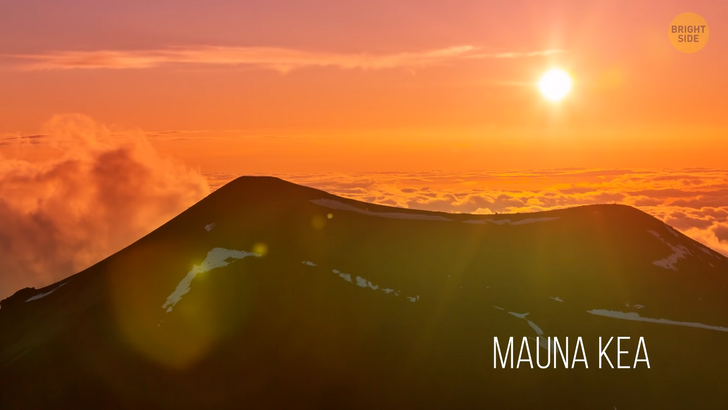
The tallest mountain in the world is also underwater — at least, partly. If you put it side by side with Mt. Everest, the mountain we consider the tallest, Everest, would be like a bunny hill compared to Mauna Kea. This is a giant mountain, but also a volcano that’s half above the water and half underwater. From top to bottom, it stretches 33,500 feet — nearly an entire mile taller than Everest.
The Titanic had almost experienced a collision a couple of days before it struck an iceberg and sank. That was something a steward from the ship wrote in a letter to his wife. He mentioned that as the Titanic was leaving the dock in April 1912, it almost collided with the SS City of New York.
They managed to avoid that trouble and sailed off on the journey that would later become one of the biggest mysteries and stories in modern history. So a fender bender in the harbor might have saved all those lives. Wow.
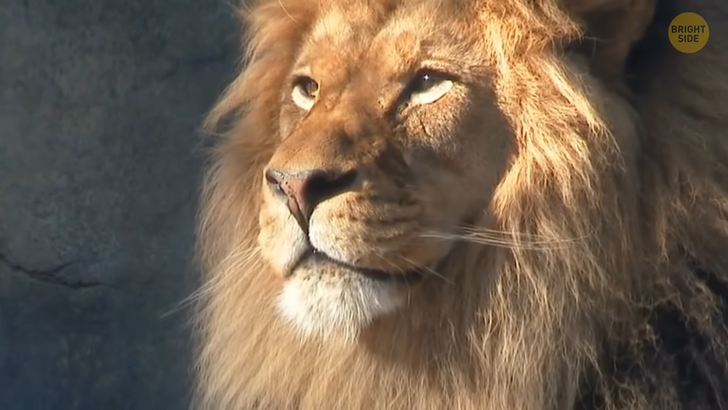
We all have unique fingerprints and tongue prints that make us different from each other, even identical twins. In a similar way, you can identify lions through their whisker patterns. Back in the 1960s, scientists found out they can identify each one from their whisker spots, which you can see on each side of the face in rows.
There’s a certain species of predatory fish that can walk on land. No, it’s not a movie scenario, more like something from your nightmares. These animals are called snakehead fish, and they sometimes come out on land when searching for food. They evolved to have gills and a special organ that allows them to breathe oxygen located in their ’gill arches’. So they’re not in a rush to come back to water right away.
They flop on their fins and can move up to a quarter of a mile away. These creatures can weigh around 14 pounds and live in different locations such as Florida, California, and New England. As if they weren’t scary enough — snakehead fish are native to Asia and Africa, which makes them an invasive species in North America. This means they don’t have natural predators, so their population can grow without control. Oh, goody...
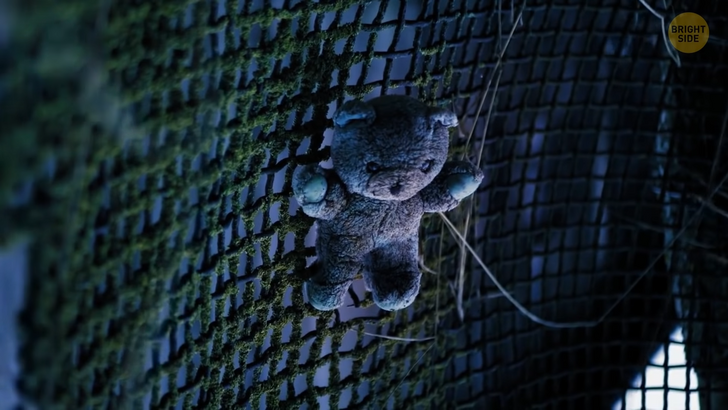
Ever wondered what stuffed animals are doing strapped to the fronts of massive trucks? These toys are the same as the decorative figures that adorn the bows of ships. Such symbols or mascots at the front are a way for sea vessels and trucks to reveal their identity to the world.
The actual message seems to be truckers are harmless and playful. Maybe, the need for sending such messages comes because people mostly see supply trucks as giant road beasts that just dominate lanes on the highway with their spiked wheels that kinda tell you to keep away.
Sometimes you’ll see stuffed animals strapped to the front of garbage trucks. Those are often toys “rescued” from the trash. They might be aged and imperfect, but they still give their vehicle a bit of warmth and personality. Same as that bumper sticker you have on your car, it’s all about customization.
If you were on Mars at the moment, you’d probably be able to enjoy listening to the winds there. Sensors researchers set on Mars picked up the vibrations that happened to be the first-ever recorded sounds of Martian wind. You can hear the wind at a decibel within a range that humans can perceive, but you’d need a little help from your headphones.

Almost 50 years ago, a man from France took up a very unusual task — eating a Cessna 150 airplane. He developed a pretty uncommon tolerance for eating dangerous things at an early age. Hey, where was Mom?
Actually, he had a rare condition known as pica which makes you hungry for things that are usually not considered food. Like, toys, grass, or in this case — an entire airplane. It took him two years to finish this large metal-filled meal. And then he took off. Ha.
Venus is the only planet in our solar system that spins clockwise. In its early stages, the solar system was just a swirling cloud of gas and dust. Like me in kindergarten. At some point, it collapsed into a spinning disc, and the Sun remained at its center. Because of this, all the planets move around the central star on roughly the same plane.
Planets spin in the same direction too — counterclockwise if you observe it from ’above’. At least most of them. Uranus spins on its side. And Venus spins in the opposite direction. This probably happens because of giant asteroids which knocked these two off course a long, long time ago.
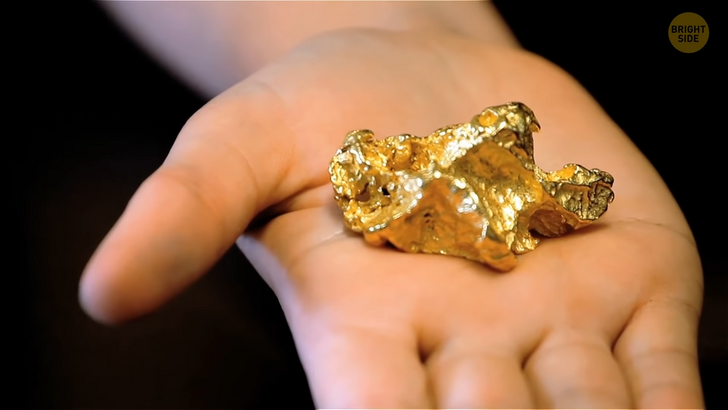
Most of our planet is covered in water — seas, oceans, lakes, rivers. But if all of that water evaporated and then came down again in the shape of a giant storm, our entire planet would be covered in 1 inch of rain.
Things are a little bit different with gold — all of it located in our planet’s core could cover the Earth in a knee-high layer. Yup, there’s a stash of gold deep down there. It sank when the Earth was still in the forming phase because that’s when it was in a molten state. But, we can’t reach any of that precious metal. Oh, well.
You’d think it’s only possible to see rainbows during the day, but they can also occur at night. This rare optical phenomenon called a lunar rainbow or moonbow happens when the light coming from the Moon gets refracted through water droplets in the air. Moonbows are usually very faint and rare because even the brightest full Moon still produces far less light than the Sun.

The inventor of the microwave wasn’t really aiming to create the device we know as a microwave today. He was actually testing a radar magnetron, which is something like an electric whistle that produces vibrating electromagnetic waves. Okay.
As he was trying it all out and experimenting with boosting the level of the magnetron tubes, he saw the peanut cluster bar in his pocket had melted. He tested this mechanism again, but this time using corn kernels and an egg. Then he realized he found something potentially way more useful than the issue he was trying to solve in the first place. Plus he could heat up his lunch.
The tallest tropical tree in the world is 330 feet tall, with a weight of more than 180,000 pounds. That’s bigger than a jetliner. You can find it on the island of Borneo in Malaysia. One of the local climbers managed to reach the top to get the official measurement. The wind was strong, and it was such a scary climb, but it paid off because, wow, the view was magnificent! And he became the first tree hugger. I think.
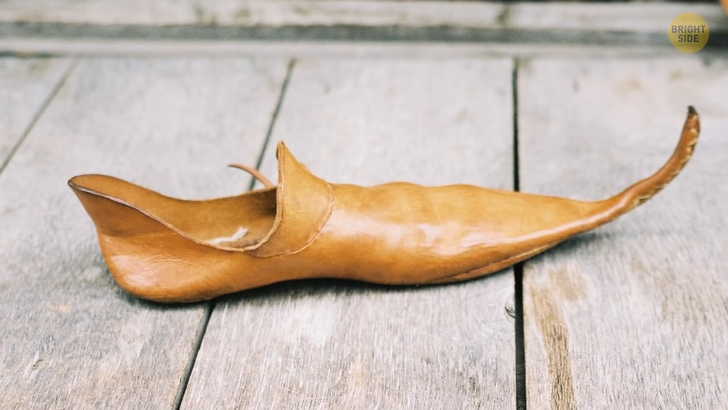
Back in medieval times, you could find shoes that were two feet long. People loved pointed shoes. They were very popular for several centuries, starting from the 12th century. People would stuff toes with wool, moss, grass, or hair.
One of the other ways to fill the empty space was to support shoes with whalebone because that’s how they could keep their shape. Fashion always changes, so at the end of the 15th century, I wasn’t around then, people started wearing short, square toes, similar to how a cow’s hoof is shaped. Yeah, that’s a fashion statement for sure.
Ever wondered how strong ants really are? I mean, really? For instance, Asian weaver ants are able to carry objects that are about 100 times their body weight. Considering their tiny scale, carrying heavy objects is not so much about muscle strength. It has more to do with a good grip. Ants have self-cleaning sticky pads on their feet. That helps them with varying the size of the contact patch on the ground. This is how they manage to stay in balance with their burden, even when they’re moving upside-down!
Our Moon is so cool it has its own time zone. Yup, that means you can tell time while there. Back in 1970, the chief astronomer at one of the U.S. planetariums designed a watch for all moonwalkers. The watch measures time in something he called “lunations.” Lunation is the period the Moon takes to rotate and revolve around our planet. And each lunation lasts almost 30 Earth days. So, researchers use a special system called Lunar Time for the Moon. And I think it’s time for me to go. Bye.





